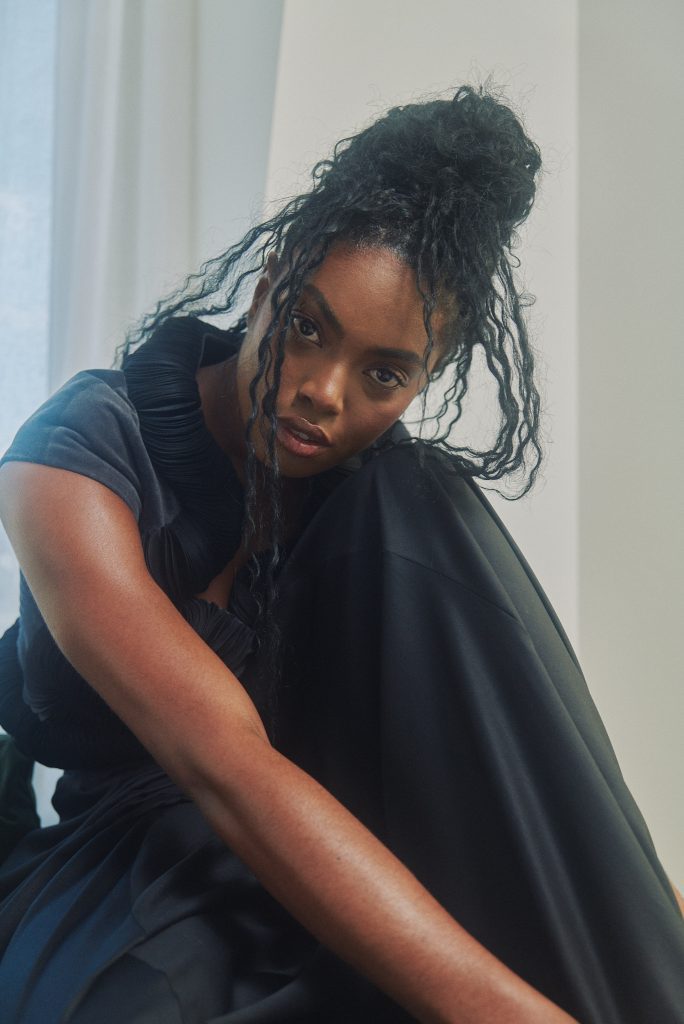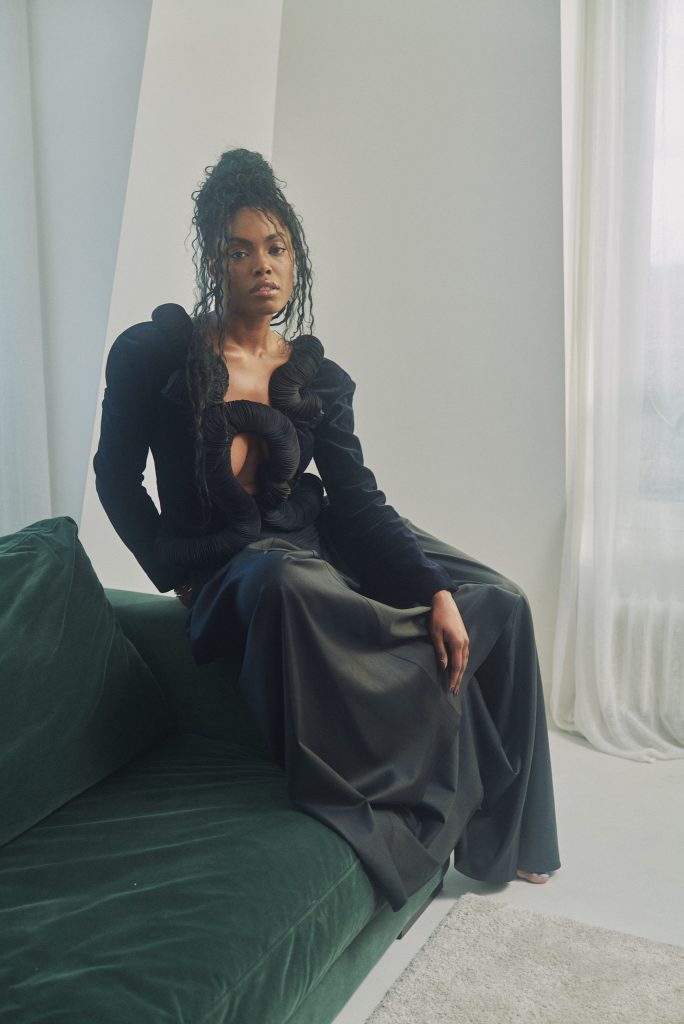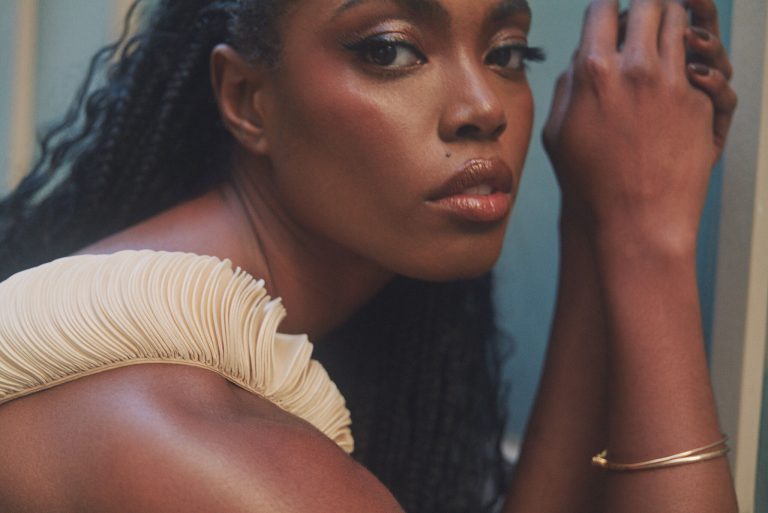
Wearing: Chocheng, Mossi and Faxion PR
Make Up & Hair: Olivia Rounord, Dalibor Vrtina
Team: Cathy Closier

Wearing: Chocheng, Mossi and Faxion PR
Make Up & Hair: Olivia Rounord, Dalibor Vrtina
Team: Cathy Closier
Julia Daka is more than a curator – she’s an architect of change. Hailing from the tiny island of Mayotte, she’s built a life centred around art, culture, and giving back. With her visionary initiative Sadaka, she’s creating a bridge between global artists and underserved communities, empowering the next generation to rewrite their own stories.
hube: Your career journey from architecture to modelling and now to art curation is quite unique. Could you share some significant moments or experiences that shaped your path and led you to where you are today?
Julia Daka: It’s funny because this all started when I was just 13 years old, growing up on a tiny island in the Indian Ocean. I’m from Mayotte and grew up on Réunion Island, where we lived in a small, tight-knit community. There was this art school teacher who saw something in me – she gave me a book on 20th-century architecture, which completely changed my life. I became obsessed with how artists like Picasso played with space and objects. It was at that moment that I knew I wanted to be an architect. I spent 13 years on that path, and even now, architecture is woven into everything I do. It’s fascinating how one book, one mentor, can set your entire life on a different trajectory.
h: As someone who has travelled extensively as a model, how have those experiences influenced your artistic preferences and aesthetic sensibilities?
JD: It’s less about the places themselves and more about the people I meet along the way. I’m constantly surrounded by artists, and my preferences are very much driven by what touches me emotionally. It’s all about connection – whether it’s a piece of art or a conversation, it’s the stories behind them that move me. I try to bring that same emotional depth to the exhibitions I curate, allowing others to feel those stories through the work.
h: Sadaka seems to be deeply rooted in your passion for bringing art to young people in Mayotte. What personal stories or encounters inspired you to create this organisation, and how do you envision it impacting the lives of the children involved?
JD: The story is deeply personal. Growing up in Mayotte, I didn’t have access to the kind of opportunities I wanted. Mayotte is the largest open-sky orphanage in France – so many children grow up without access to proper education or even hope for a future. I had to leave when I was five, moving to live with my grandmother on Réunion Island just to pursue an education. My journey was filled with struggle, but art saved my life. Sadaka is my way of giving back, of creating those opportunities I never had. I want these kids to know that just because they’re from this island, it doesn’t mean they’re limited. I want to bring the world to them, give them a voice, and show them what’s possible.
h: The Memories of Forms exhibition holds special significance for Sadaka. Could you share a personal reflection on the impact it had, both on the artists involved and the community it aimed to engage?
JD: Art is the most beautiful and powerful way to express what words can’t. It doesn’t matter whether it’s a painting, sculpture, or installation – art has this incredible ability to communicate emotion and experience. For marginalised communities, art is essential. It gives a voice to those who are often forgotten. In Memories of Forms, we had artists from such different backgrounds, but they all came together through a shared sense of memory and identity. When I saw how much the children related to the artists’ personal stories, it hit me how crucial representation is. Art has the power to change how we see ourselves and the world.

